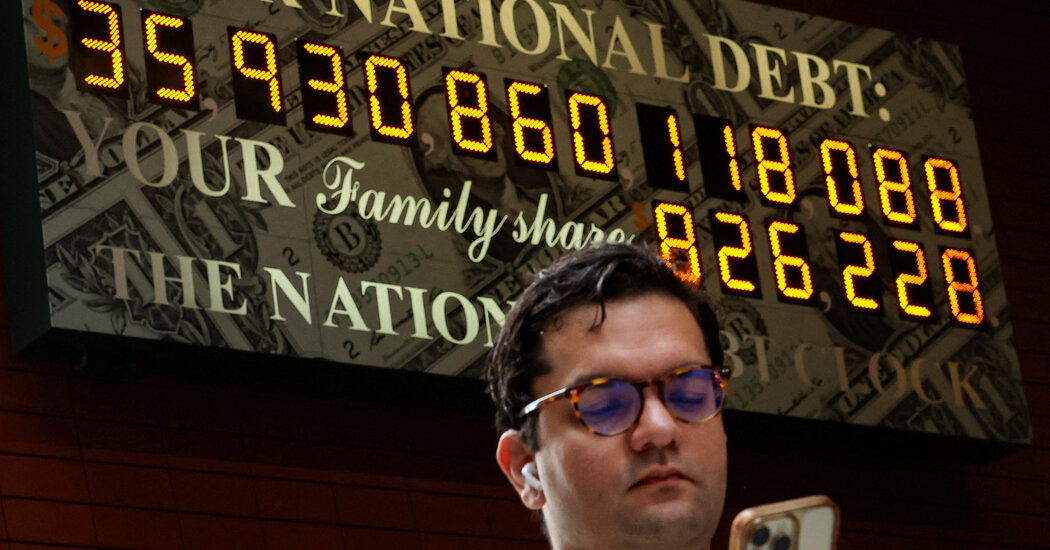

We explain how economists evaluate the national debt.
President Trump’s domestic policy bill, which the House is debating now on the floor and is expected to vote on soon, would add $3.4 trillion to the federal debt over the next decade. That’s on top of $29 trillion the U.S. already owes.
Numbers that big can lose their meaning. But the debt is not all abstract; it’s money Americans enjoy today but future generations must pay off with interest. The interest America has to pay its lenders will exceed $1 trillion for the first time ever next year — more than we spend on Medicare.
But not all debt is created equal. A trillion dollars means something different in the U.S. than it does in, say, Ireland or Panama.
So how should Americans make sense of the debt? Economists have a few different ways of assessing that, beyond how big or small the total is. Today, I’ll break down three and explain how the U.S. fares on each.
Everything is relative. $29 trillion sounds like a lot — and it is. It’s among the biggest fiscal shortfalls ever recorded for a developed nation not at war. But the U.S. also has the largest economy in the world.
Economists often measure debt by how it compares to a country’s economic output, also known as G.D.P. America’s debt is now about the same size as its G.D.P. (Japan and Italy have also crossed that threshold, but few other countries have.)
![[GOOD PRESS] ON[GOOD PRESS] ON](https://georgemagazine.com/wp-content/uploads/2024/08/16389056566437433941_2048-300x300.jpeg)


